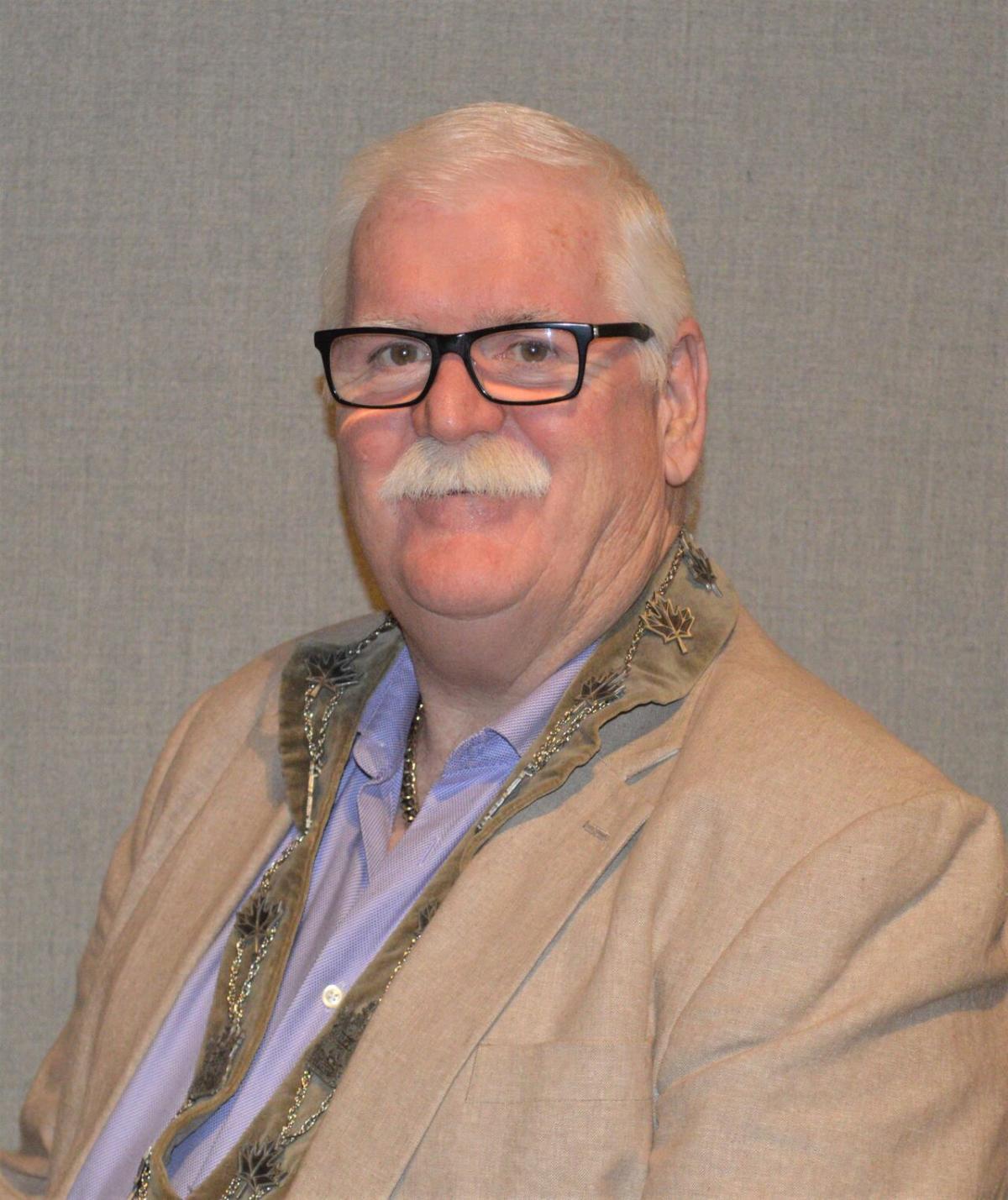Tom Eagles says it’s just a matter of time before a slow ambulance response time leads to a tragedy in his community.
The mayor of Tobique Valley, a sprawling district that includes the former village of Plaster Rock, said he’s surprised that rural ambulance service hasn’t become a major issue in the New Brunswick election campaign.
“Everybody’s in the mindset. Everybody thinks the system is broken,” Eagles said.
On one recent night, the ambulance normally stationed in Plaster Rock was deployed to Campbellton because of unstaffed paramedic positions there, Eagles said, leaving his community covered by a team based in Saint-Léonard.
That would mean a response time of an hour or more for some of the remote communities in Tobique Valley, such as Nictau or Riley Brook.
Six years ago, public alarm about paramedic job vacancies — some unfilled because of bilingualism requirements — helped upend the provincial election.
The president of the union representing paramedics followed then-Premier Brian Gallant’s Liberal campaign around the province, focusing public attention on the problems.
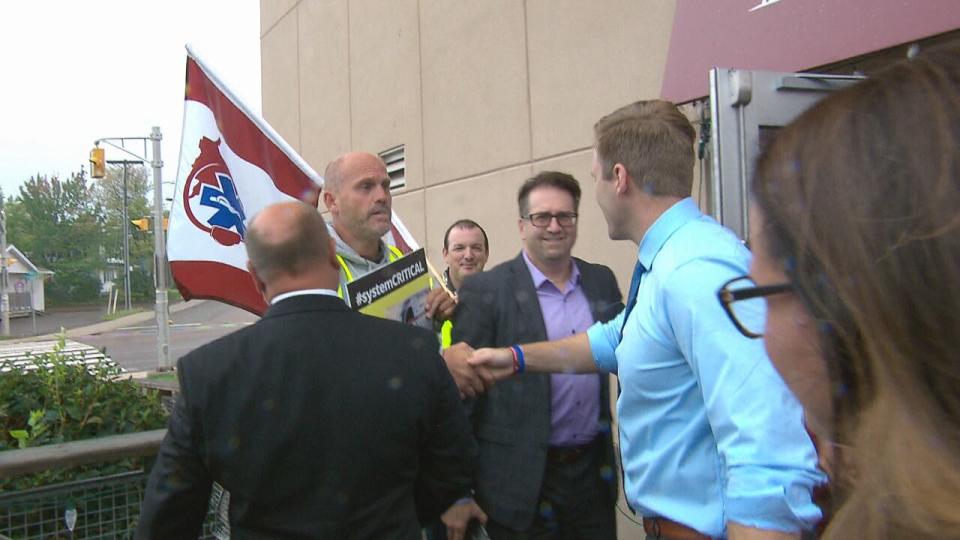
Greg McConaghy of CUPE LOCAL 4848 is seen here shaking then-Liberal Leader Brian Gallant’s hand as Gallant left a campaign event in Riverview during the 2018 election campaign. (Pierre Fournier/CBC News)
On election day the Progressive Conservatives won one more seat than Gallant’s Liberals and formed a minority government backed by the People’s Alliance, which made the ambulance crisis a centrepiece of its campaign.
The situation is no better now, according to Chris Hood, the executive director of the Paramedic Association of New Brunswick.
“From a response-time standard — worse. Worse. It’s not getting any better,” he said.
“By their own admission, Ambulance New Brunswick would say in certain pockets of the province, their ability to staff ambulances and get ambulances to ambulance calls within the contractual obligations is worse.”
WATCH | ‘It’s not going to be good’: Rural mayor on ambulance delays:
Medavie Health Services New Brunswick Inc., the service provider, uses a dynamic deployment system that involves shifting the locations of ambulances as crews are deployed.
It can leave smaller communities without an ambulance when the local vehicle is shifted closer to larger population centres.
With many seniors, and a paper mill full of workers using large industrial saws and other gear, Eagles said it’s time to deal with the province’s contract with Medavie, which runs another three years.
“I think the contract should be ripped up as we speak, and the government should run it themselves,” he said.
“We have great staff, we have great equipment, but we need to do something with the contract. I think it’s flawed in a lot of areas. The government’s got to come up to the plate. Are they going to wait until 2027 to do something?”
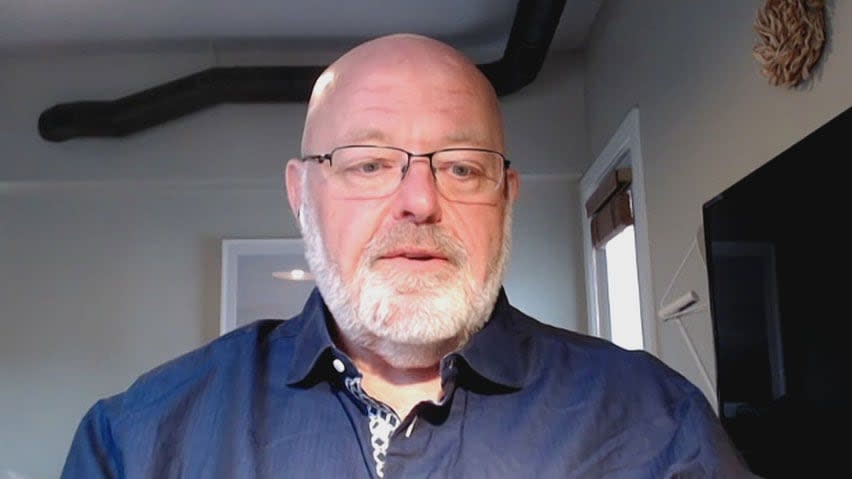

Chris Hood, executive director of the Paramedic Association of New Brunswick, says the overall number of vacancies remains around the same as in 2018. (CBC)
Progressive Conservative Leader Blaine Higgs said this week that the paramedic shortage “was an issue six years ago and it doesn’t seem to be an issue today, other than the opportunity to utilize even more so the capabilities that paramedics have.”
“As far as contractual issues, I think that we’re moving along okay. I don’t know of any current issues that are a problem.”
In 2020, New Brunswick’s auditor general slammed the Medavie contract and how it measures performance.
The agreement requires the company to respond to 90 per cent of calls within target times — nine minutes in urban areas and 22 minutes in rural areas.
But under the contract, rural response times are averaged into broader regional numbers that include a far greater number of on-time responses in urban areas, the audit said — meaning there’s no incentive to improve the rural times.
Medavie used to include monthly response rates in each community in New Brunswick on its website, but that stopped at the end of 2022.
“Following a transition to a new dispatch system in January 2023, work was required to configure data in a way that ensured accurate reporting of response time data by service areas,” spokesperson Eric Robichaud said in an email.
“This reconciliation work regarding our response time data is ongoing.”
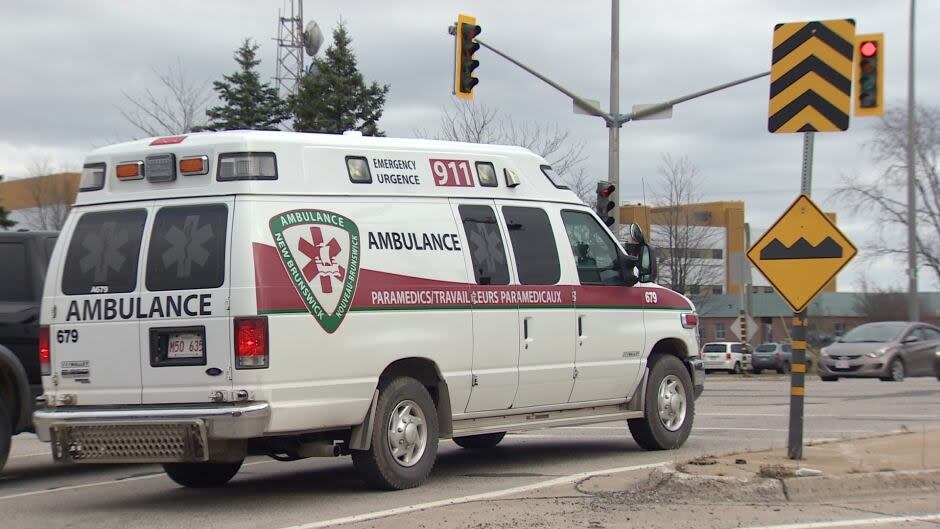

Health-care officials are looking at letting paramedics play new roles, such as helping out in hospital emergency departments to alleviate pressure on other medical staff. (CBC)
Officials from Ambulance New Brunswick, the provincial government entity that contracts with Medavie for the service, told a committee of MLAs last year they want to renegotiate the agreement, but there’s been no word on changes.
A green paper prepared by the government at the time of the crisis in 2018 reported there were 101 paramedic vacancies, 61 of them full-time and 40 part-time.
Of the total, 82 positions required bilingualism.
“It’s about making decisions to fix the problem,” Higgs said in 2018 as he argued for putting aside the bilingualism requirements.
His government eventually acknowledged it couldn’t legally do that.
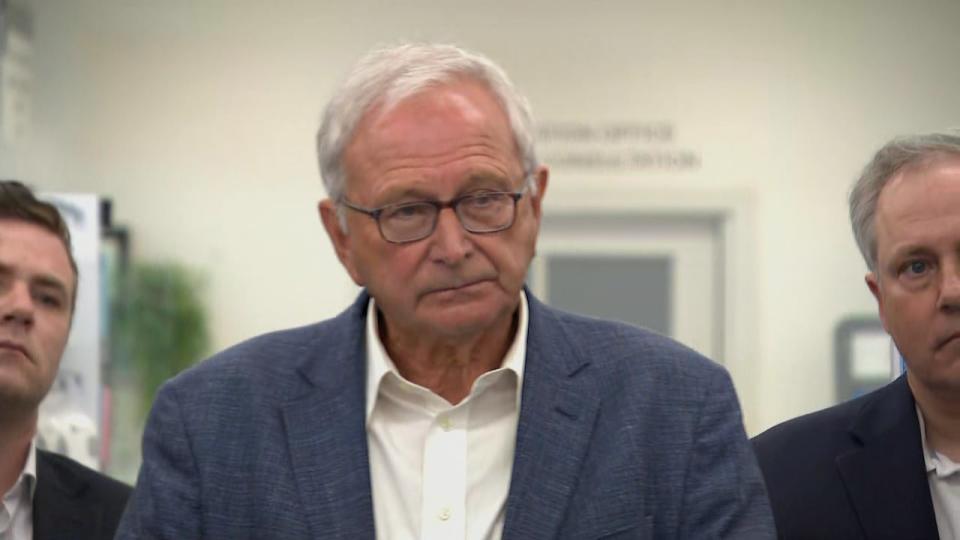

PC Leader Blaine Higgs said this week that the paramedic shortage ‘was an issue six years ago, and it doesn’t seem to be an issue today, other than the opportunity to utilize even more so the capabilities that paramedics have.’ (Radio-Canada)
But it put in place other measures to address the problem, including a patient-transfer service that does not require bilingual staff, more paramedic training in English and French and a reclassification of their jobs into a different union that boosted wages.
Health-care officials are also looking at letting paramedics play new roles, such as helping out in hospital emergency departments to alleviate pressure on other medical staff.
That’s happening at the small hospital in Sussex, and Eagles says it was supposed to be happening by now in Plaster Rock, but isn’t.
Hood says opportunities like that can help with recruitment, because it offers paramedics other work options.
“Opportunities are starting to show themselves, which I think is nothing but a good thing,” he said.
Hood said working in a “truck,” as an ambulance is called within the system, tends to have a time span of about seven to 10 years before an employee burns out or must leave due to injury.
Higgs said in this week’s CBC leaders’ debate that 24,000 calls to 911 last year were from people who didn’t need to go to a hospital, and advanced care paramedics were able to help them without having to take them to an ER.
“I think the point is we have to do health-care differently,” said Higgs, whose campaign has promised to further expand the scope of practice of various health professionals.
Hood said that needs to happen faster.
“There’s all kinds of projects that could be undertaken. We just need to bite the bullet and start doing it.”
He describes the issue of sending the hypothetical “last ambulance” available to someone complaining about a sore foot, making it impossible to respond to a cardiac arrest.
“That’s the kind of thing we need to start thinking about and triaging in real time — what kind of calls we’re going to send the absolutely last resources to,” he said.
“Nobody’s saying that they don’t need an ambulance. What we’re saying is somebody needs an ambulance more urgently than you do.”
Hood says he’s not heard any recent concerns about bilingualism requirements, but the overall number of vacancies remains around the same as it was in 2018.
That, plus delays in ambulances offloading patients at hospitals because of staff issues in those facilities, continue to cause response delays, he said.
At any given time, about 25 per cent of the paramedic workforce can be out with injuries or on long-term disability or maternity leave, or on secondments, Hood said.
Eagles says he’s still hoping ambulance service gets more attention in a provincial election in which health care has been a top issue.
“The main issue is primary care in the province, and this is just a trickle-down effect,” he said.
“We’re trying to fix the doctor situation, the nurses situation, this is just another cog in the wheel and it’s very very important we get this right.”

